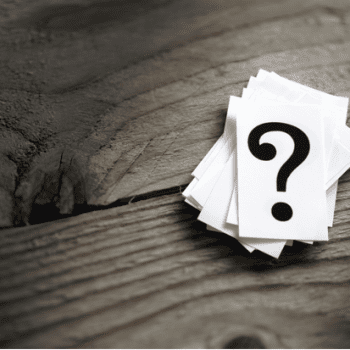
A Lesson in Licensing: Citing Third-Party Materials in Your Manuscript
The vast majority of textbook authors will include some kind of information pulled from third-party sources in their manuscript, whether text excerpts, images, tables, or data. As you plan out your manuscript and begin drafting, it’s critical to keep a running log of all the materials you use and reference. You may even want to cite your sources directly within your manuscript as you go.
This ensures you are: 1) acknowledging academic sources properly; and 2) creating a record of third-party materials so you can secure the necessary permissions and copyright clearance for all sourced information.
A note regarding permissions and copyright clearance: your publisher may have a dedicated team to vet your sources and secure copyright clearance, or you may be expected to secure the copyright clearance on your own. Regardless of the situation, a running log and a clean manuscript will make the process that much easier for either you or your publishing team.
What You Need to Cite
The following are examples of third-party information that should be cited directly within your manuscript:
- Any text that is taken from the source word-for-word (and therefore appears in your manuscript in quotation marks)
- Any data that you did not collect yourself
- Paraphrased material (whether rewritten or rephrased)
- References, i.e. any information gleaned from another’s work
- Trademarked names or phrases
- Any images or photos that you did not create or take yourself
- Any ideas that are not wholly your own (keep in mind that some information/knowledge you include may be common to scholars within your field, but not to students or laypeople)
Note: When in doubt, plan to include a citation!
Tips for Gathering Source Information
Start by creating a master list, organized by the types of sources you will include. For example, you might have sections for books, peer-reviewed journals, magazine articles, web-based resources, and newspaper articles. Each time you add/find a new source, list complete information about that source in the appropriate section. This way, you can build your bibliography or reference list a little at a time.
As you’re drafting your manuscript, if you know you need to cite a source but you don’t want to interrupt your writing flow, make a quick note in parentheses with general information (i.e., Smith book) that you can reference later. Then, when you finish your writing session, go back and add in the relevant information from your master list of sources.
While researching, if you find a quote you might want to use, but you’re not sure where it will fit in your manuscript, start a separate document for potential quotes and block quotes. Add the full text of each quote to the document, including the page number from the original source (i.e., Smith book, p. 7). Then, if you decide to use the quote at a later time, you can copy and paste it directly into your manuscript and you’ll know where you found it.
Format the full, correct citations for each chapter once you’ve finished writing it. When you take a break to complete your citations, the information is fresh in your mind, and formatting the citations for a single chapter versus your full manuscript is much less daunting and time-consuming. This strategy also prevents citation fatigue, which can lead to errors in your citations.
When in doubt, plan to have a citation. Not sure if your material requires a citation? Include it! It’s much easier to delete a citation you don’t need than to track down source information later in the publishing process.
What Style Should I Use For My Citations?
The style you’ll use for your manuscript largely depends upon your academic discipline and the subject matter of your book. For example, American Psychological Association (APA) style is often used for manuscripts in the behavioral and social sciences. The Chicago Manual of Style (CMOS) is often used for textbooks in history, philosophy, religion, and the arts. Modern Language Association (MLA) style may be used within the language arts, cultural studies, and other humanities disciplines.
If you’re working with a publisher, consult with your publishing team to determine the best citation style for your textbook. There are many nuances for each style, so determining your preferred citation style early on in the manuscript development process will help you avoid rework later in the process.
For more information on each citation style, visit the following websites:
APA – https://apastyle.apa.org/



